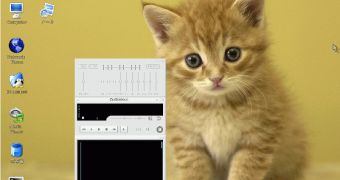Yuichiro Nakada proudly announced two days ago a new release of its Linux distribution, Berry Linux 0.94, which is now powered by the Linux kernel 2.6.27.10 and based on the famous Fedora 10. Berry Linux is a Fedora-based Live CD that features a customized KDE 4 desktop environment. The new release updates a few important packages, such as Firefox, Adobe Flash, Wine or even Samba, but the most important thing in this release is the K Desktop Environment, which is now in sync with the version from Fedora 10. Let's a have a look at the main changes since version 0.93 of the Berry Linux Live CD:
· KDE 4.1.3 · X.Org 7.4 · Adobe Flash Player 10.0.12.36 · Mozilla Firefox 3.0.5 (also available in Japanese) · InkScape 0.46 · Samba 3.2.5 · Wine 1.1.9 · Digikam 0.10.0
Under the hood:
· Kernel 2.6.27.10 (with SMP, bootsplash and ndev/udev) · Glibc 2.9 · GCC 4.3.2
Why should I use Berry Linux? Because:
· Berry Linux can boot from USB sticks; · Berry Linux uses WHIZ, a very sharp Kana-Kanji conversion system; · Automatically recognizes USB storage and shows icons; · Berry Linux uses free Japanese True Type Fonts; · Berry Linux uses bootsplash when booting; · Berry Linux uses DHCP to connect the Internet (PPPoE is also available); · Berry Linux can save personal setting in Live mode; · Berry Linux is Red Hat/Fedora compatible.
Berry Linux is a Live CD Linux distribution, based on Fedora Linux, with automatic hardware detection and support for many graphics cards, sound cards, SCSI and USB devices, and various other peripherals. It includes Firefox, OpenOffice.org, Wine and many other Microsoft Windows compatible pieces of software. Because it's a Live CD it can be used as an Educational CD, a rescue system CD or just as a Demo CD to showcase the powers of Linux to your friends, colleagues and family. Download Berry Linux 0.94 right now from Softpedia.

 14 DAY TRIAL //
14 DAY TRIAL //